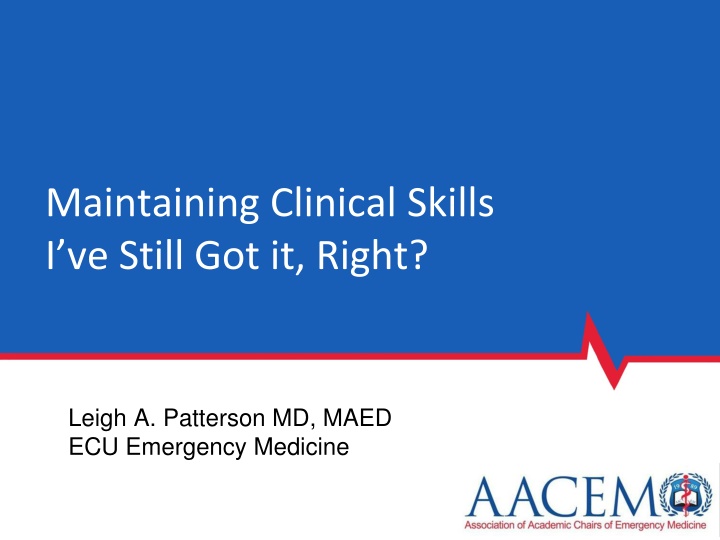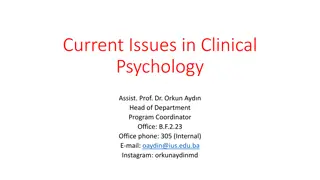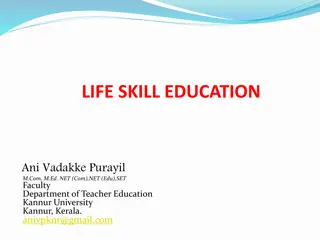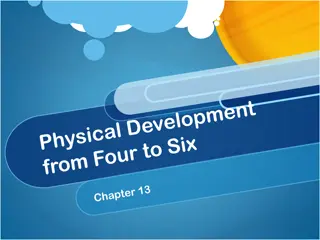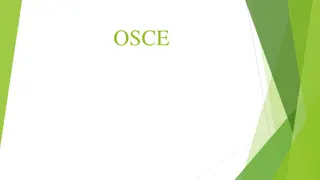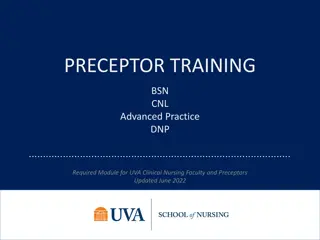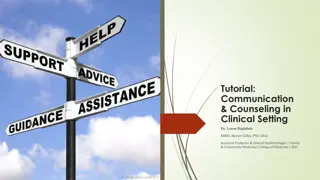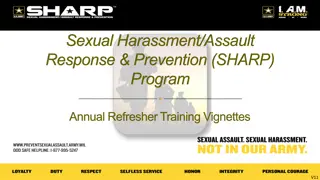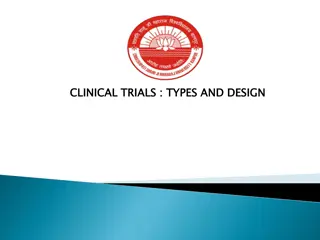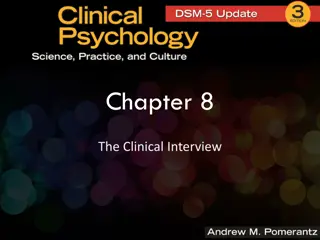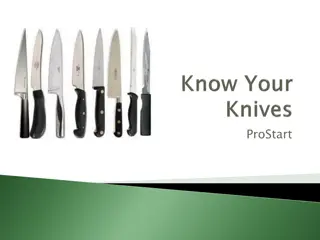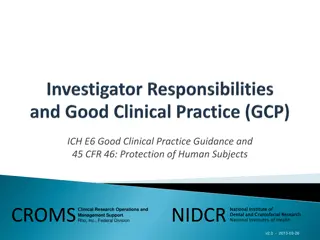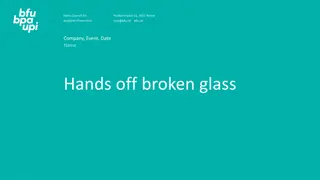Maintaining Clinical Skills - Are They Still Sharp?
Leigh A. Patterson, MD, MAED from ECU Emergency Medicine discusses the importance of keeping up with clinical skills, including performing Lumbar Punctures. Explore case studies and strategies for mid-career faculty to maintain competence and address peer concerns. Reflect on CME education, feedback sessions, peer reviews, and simulations to enhance performance and decision-making in emergency medicine settings.
Download Presentation

Please find below an Image/Link to download the presentation.
The content on the website is provided AS IS for your information and personal use only. It may not be sold, licensed, or shared on other websites without obtaining consent from the author.If you encounter any issues during the download, it is possible that the publisher has removed the file from their server.
You are allowed to download the files provided on this website for personal or commercial use, subject to the condition that they are used lawfully. All files are the property of their respective owners.
The content on the website is provided AS IS for your information and personal use only. It may not be sold, licensed, or shared on other websites without obtaining consent from the author.
E N D
Presentation Transcript
Maintaining Clinical Skills I ve Still Got it, Right? Leigh A. Patterson MD, MAED ECU Emergency Medicine
Question Have you supervised a resident performing a Lumbar Puncture in the last 18 months? Have you performed an LP in the last 18 months? How many and how often must you perform a procedure to maintain your competence?
Case 1 Mid-career EM faculty Mid range performance Dayshifts Conference coverage Colleague concerns 2 Peer Review Cases in a year
Case 1 Mid-career EM faculty Mid range performance Dayshifts Conference coverage Colleague concerns 2 Peer Review Cases Debriefing meeting Parity in scheduling It s fine when the residents are there Most procedures are fine
Case 1 Secondary Peer Review at Community Site FPPE with Chief of Staff, CMO RoundTable Analytics 2 Year Matched Colleague Comparison Patients Triaged to Resusc Rooms Room-to-Doc Procedural Data Review
Case 1 CME Education Reflection Separation
Case 2 Mid-career PEM faculty Learner feedback Nursing feedback RT Case for Peer Review 3 Areas Intubations, Resuscitation Direction, CVC/LP
Case 2 Mid-career PEM faculty Learner feedback Nursing feedback RT Case for Peer Review 3 Areas Intubations, Resuscitation Direction, CVC/LP Meeting for Reflection
Case 2 - Simulation 10 cases in 3 Key areas US CVC mannequin, 4 Intubations, Infant LP Trauma, SVT, Respiratory Distress 4 Experienced Faculty Assessors Audio +Video Recording Performance Checklists Chair Beta Tested Faculty Informed
Case 2 Simulation Outcome Reflection Options Decision
Case 3 (X2) Clinical Re-entry Plans >6 months Phase 1 Simulation Assessment Phase 2 Patient Care with Supervision Phase 3 Independent Supervised Care 2 PPH, Chart Reviews
In Common Intent to Practice Hesitancy to Disclose Simulation Performance Anxiety Perspective of Learners
Self-Assessment A number of studies found the worst accuracy in self-assessment among physicians who were the least skilled and those who were the most confident. Age or experience did not correlate with the clinician s ability to judge performance in joint injections. Davis DA, Mazmanian PE, Fordis M, Van Harrison R, Thorpe KE, Perrier L. Accuracy of physician self-assessment compared with observed measures of competence: a systematic review. JAMA. 2006 Sep 6;296(9):1094-102. doi: 10.1001/jama.296.9.1094. PMID: 16954489.
Ongoing Practice In EM 2018, 18 EDs, 3 AHCs 16-65 K 2805 procs 1582 Performed 182 FTE 50% no CVC, LP; 75% no CT; 25% no Intubation 33% Performed by Docs <5 years Practice Volume - Learners Simon EL, Smalley CM, Meldon SW, Borden BL, Briskin I, Muir MR, Suchan A, Delgado F, FertelBS. Procedural frequency: Results from 18 academic, community and freestanding emergency departments. J Am Coll Emerg Physicians Open. 2020 Sep 26;1(6):1669-1675. doi: 10.1002/emp2.12238. PMID: 33392575; PMCID: PMC7771730.
Outside EM 50% bedside procs performed by GIM + SS 11% hospitalists perform core procs Transparent Dialog Protocols supervision, Procedure Team Retraining Opportunities Vaisman A, Cram P. Procedural Competence Among Faculty in Academic Health Centers: Challenges and Future Directions. Acad Med. 2017 Jan;92(1):31-34. doi: 10.1097/ACM.0000000000001327. PMID: 27465227; PMCID: PMC5191975.
Experience Curves Pusic MV, Kessler D, Szyld D, Kalet A, Pecaric M, Boutis K. Experience curves as an organizing framework for deliberate practice in emergency medicine learning. Acad Emerg Med. 2012 Dec;19(12):1476-80. doi: 10.1111/acem.12043. Epub 2012 Dec 11. PMID: 23230958.
Answers and Questions Faculty Simulation How many? How Often? Who and how do we monitor? What is my obligation as chair? Is there opportunity for EM?
Department Interventions Annual Eval Performance Review Faculty Simulation Sessions Procedure Team System Analysis and Quarterly Monitor
Thank you Richard Stair stairr@ecu.edu - Simulation Jennifer Muir muirj@ecu.edu
